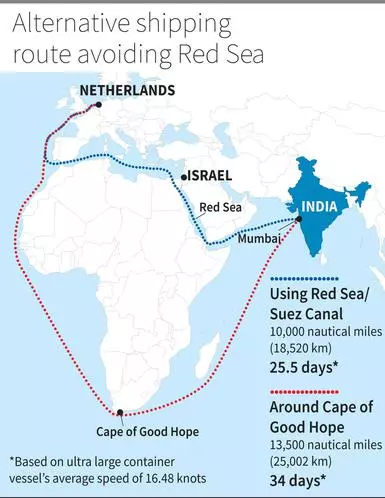
Navigating Historical and Modern Exchanges: Red Sea Trade Routes
The Red Sea, with its storied history as a critical trade route, continues to play a pivotal role in global commerce. The Red Sea Trade Routes, shaped by centuries of historical exchanges, are a testament to the region’s significance in fostering economic connections and cultural interactions.
Historical Significance and Ancient Commerce
The Red Sea Trade Routes have a rich historical tapestry that dates back to ancient times. The region witnessed the flourishing trade activities of civilizations such as the Egyptians, Greeks, and Romans. Precious goods, spices, and cultural influences traversed these routes, creating a melting pot of diverse societies along the shores of the Red Sea.
Port Cities and Maritime Hubs
Key to the Red Sea Trade Routes were the port cities and maritime hubs that dotted the coastline. Cities like Jeddah, Aden, and Massawa emerged as bustling centers of trade, where merchants from different corners of the world converged to exchange goods and ideas. These maritime hubs were crucial nodes in the network of Red Sea commerce.
The Spice Trade and Cultural Exchanges
One of the defining chapters in the history of Red Sea Trade Routes is the Spice Trade. Spices from the East, including cinnamon, pepper, and cloves, made their way through these routes to reach Europe. This exchange not only transformed culinary practices but also sparked cultural exchanges, as people from different regions came into contact along the Red Sea shores.
The Silk Road Connection
The Red Sea Trade Routes were intricately connected to the broader Silk Road network. The overland Silk Road and the maritime routes through the Red Sea formed a comprehensive trade network that facilitated the movement of goods, technologies, and cultural influences between the East and the West. This interconnected trade web played a crucial role in shaping world history.
Ottoman Era and Imperial Trade Routes
The Ottoman Empire further solidified the importance of the Red Sea as a conduit for trade during the medieval period. Imperial trade routes were established, connecting the Ottoman territories to the Red Sea ports. This era saw the continuation of diverse trade goods, including textiles, spices, and precious metals, flowing through the Red Sea Trade Routes.
Colonial Influences and Navigation Challenges
During the colonial period, European powers sought to control and exploit the Red Sea Trade Routes. The Suez Canal, completed in 1869, became a strategic passage that significantly reduced the travel time for ships. However, this era also introduced navigation challenges and geopolitical tensions as colonial powers vied for dominance in the region.
Modern Trade Dynamics and Global Shipping
In the modern era, the Red Sea Trade Routes continue to be vital conduits for global trade. The Suez Canal remains a key passageway, accommodating a significant portion of the world’s shipping traffic. The region’s geopolitical importance is underscored by its role in connecting markets in Asia, Europe, and Africa, fostering a complex web of contemporary trade dynamics.
Economic Zones and Specialized Ports
Governments along the Red Sea are investing in the development of economic zones and specialized ports to enhance the efficiency of modern trade. These initiatives aim to transform the Red Sea into a hub for logistics, manufacturing, and transshipment, further solidifying its position as a critical player in the global trade network.
Sustainable Practices and Future Trade Horizons
As the world embraces sustainability, the Red Sea Trade Routes are also adapting to eco-friendly practices. Governments and stakeholders are prioritizing environmental considerations in maritime activities, aiming to create a balance between economic growth and ecological preservation. The future of Red Sea trade envisions a harmonious coexistence of commerce and sustainability.
Explore the Legacy and Future of Red Sea Trade Routes
The Red Sea Trade Routes, with their historical legacy and contemporary relevance, offer a fascinating journey through the evolution of global commerce. Explore the ongoing narrative of trade and cultural exchanges along the Red Sea at teevio.net, where the past and present converge in a dynamic celebration of economic connections and shared histories.
